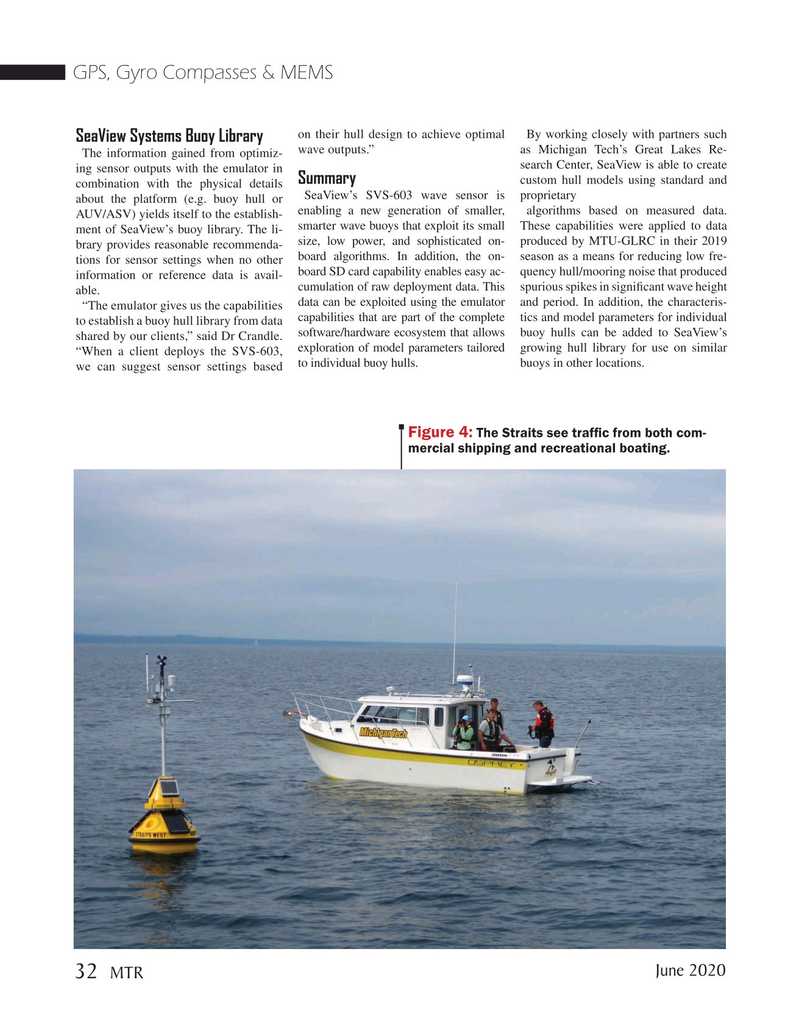
Page 32: of Marine Technology Magazine (June 2020)
Read this page in Pdf, Flash or Html5 edition of June 2020 Marine Technology Magazine
GPS, Gyro Compasses & MEMS on their hull design to achieve optimal By working closely with partners such
SeaView Systems Buoy Library wave outputs.” as Michigan Tech’s Great Lakes Re-
The information gained from optimiz- search Center, SeaView is able to create ing sensor outputs with the emulator in
Summary custom hull models using standard and combination with the physical details
SeaView’s SVS-603 wave sensor is proprietary about the platform (e.g. buoy hull or enabling a new generation of smaller, algorithms based on measured data.
AUV/ASV) yields itself to the establish- smarter wave buoys that exploit its small These capabilities were applied to data ment of SeaView’s buoy library. The li- size, low power, and sophisticated on- produced by MTU-GLRC in their 2019 brary provides reasonable recommenda- tions for sensor settings when no other board algorithms. In addition, the on- season as a means for reducing low fre- board SD card capability enables easy ac- quency hull/mooring noise that produced information or reference data is avail- cumulation of raw deployment data. This spurious spikes in signifcant wave height able. data can be exploited using the emulator and period. In addition, the characteris- “The emulator gives us the capabilities capabilities that are part of the complete tics and model parameters for individual to establish a buoy hull library from data shared by our clients,” said Dr Crandle. software/hardware ecosystem that allows buoy hulls can be added to SeaView’s “When a client deploys the SVS-603, exploration of model parameters tailored growing hull library for use on similar we can suggest sensor settings based to individual buoy hulls. buoys in other locations.
Figure 4: The Straits see traffc from both com- mercial shipping and recreational boating.
June 2020
MTR 32

 31
31

 33
33
